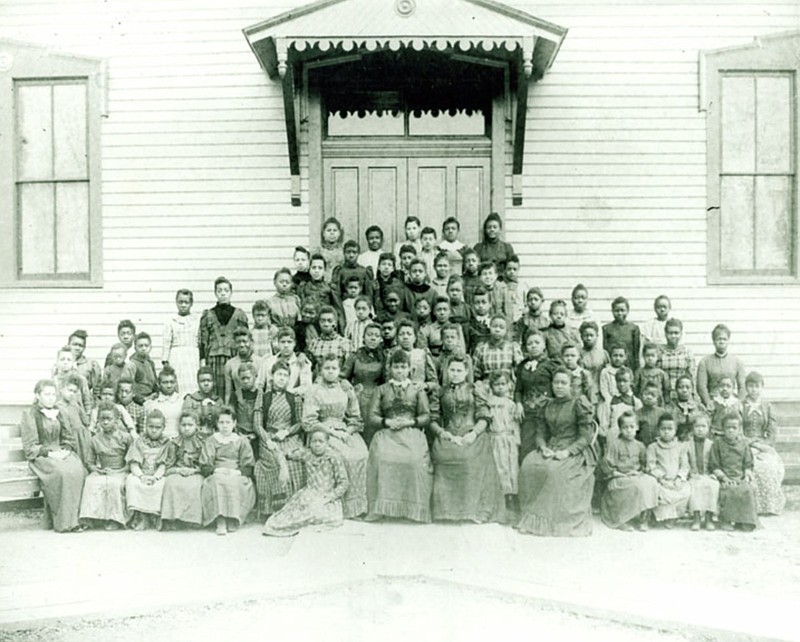Have you heard of the Colored Industrial Institute in Pine Bluff? It was one of the first Catholic-supported schools for African American children in the state. The school was established by a white Confederate veteran named Fr. John Michael Lucey, a progressive who spoke out against lynching and protested efforts to pass separate coach legislation early in the Jim Crow era.
Planning for the Colored Industrial Institute began in May 1889. The original school, a two-story wooden building that could accommodate 200 students, was situated on a city block on State Street between 15th and 16th Avenues. Ferdinand (Ferd) Havis and Wiley Jones, two wealthy Black Pine Bluff entrepreneurs, were among the local influencers recruited to serve on the first board of directors, along with several white city leaders. The Kentucky-based Sisters of Charity of Nazareth supplied the first teachers.
The school opened on Sept. 9, 1889, billed as a day school accepting girls of all ages and boys up to 14 years old. The curriculum seems quaint by today's standards. Girls were instructed in traditional subjects such as mathematics and literature, as well as sewing, crochet and vocal music. Boys also studied traditional subjects and woodworking. Moral instruction was an emphasis, and students attended Catholic mass.
Students thrived. In 1893, the Colored Industrial Institute participated in the Catholic Educational Exhibit at the World's Columbian Exposition in Chicago. The school was awarded two medals and two diplomas for superior literary and industrial work, and their exhibit was described as "The most remarkable of the schools for colored children...There was no exhibition of work from colored children at the World's Fair to compare with it."
By 1894, the school was operating in a three-story brick building with 235 students with six teachers from the Sisters of Charity of Nazareth. In response to the growth, Lucey accepted help from the Josephite priests, an order established to evangelize African Americans prior to the Civil War. In a further move to evangelize African Americans, Lucey brought in an African American order of sisters, the Sisters of the Holy Family, to teach at the school.
The Sisters of Charity of Nazareth withdrew from the Colored Industrial Institute in 1901. In September 1904, the Josephite order sent the Rev. John H. Dorsey to assist the Josephite priest Rev. J.J. Ferdinand with the Colored Industrial Institute and Pine Bluff's St. Peter's Church.
When the white Ferdinand left abruptly after clashing with Rev. Lucey (now a monsignor), the Colored Industrial Institute became the first school to be run by a Black priest (Dorsey) and Black nuns. Lucey and Dorsey also disagreed over the direction of St. Peter's Church, with Lucey charging that its membership failed to increase after Dorsey was made pastor.
Eventually, Lucey and Bishop John Morris of the Diocese of Little Rock asked the Josephite fathers to officially remove Father Dorsey in 1909. Soon after Dorsey's removal, attendance at the Colored Industrial Institute began to drop, and the school was closed by 1913. Eventually, St. Peter's took over the Colored Industrial Institute buildings and continued operation as St. Peter's School.
In 1960, St. Peter's School was one of 10 predominately Black Catholic schools in Arkansas. Throughout the 1960s and 1970s, most closed. In 2012, St. Peter's, the former Colored Industrial Institute, closed for good due to dwindling enrollment.
This article is among features at ExplorePineBluff.com, a program of the Pine Bluff Advertising and Promotion Commission. Sources: Encyclopedia of Arkansas, Sisters of Charity of Nazareth, Arkansas Catholic. Image credit: Arkansas State Archives.

